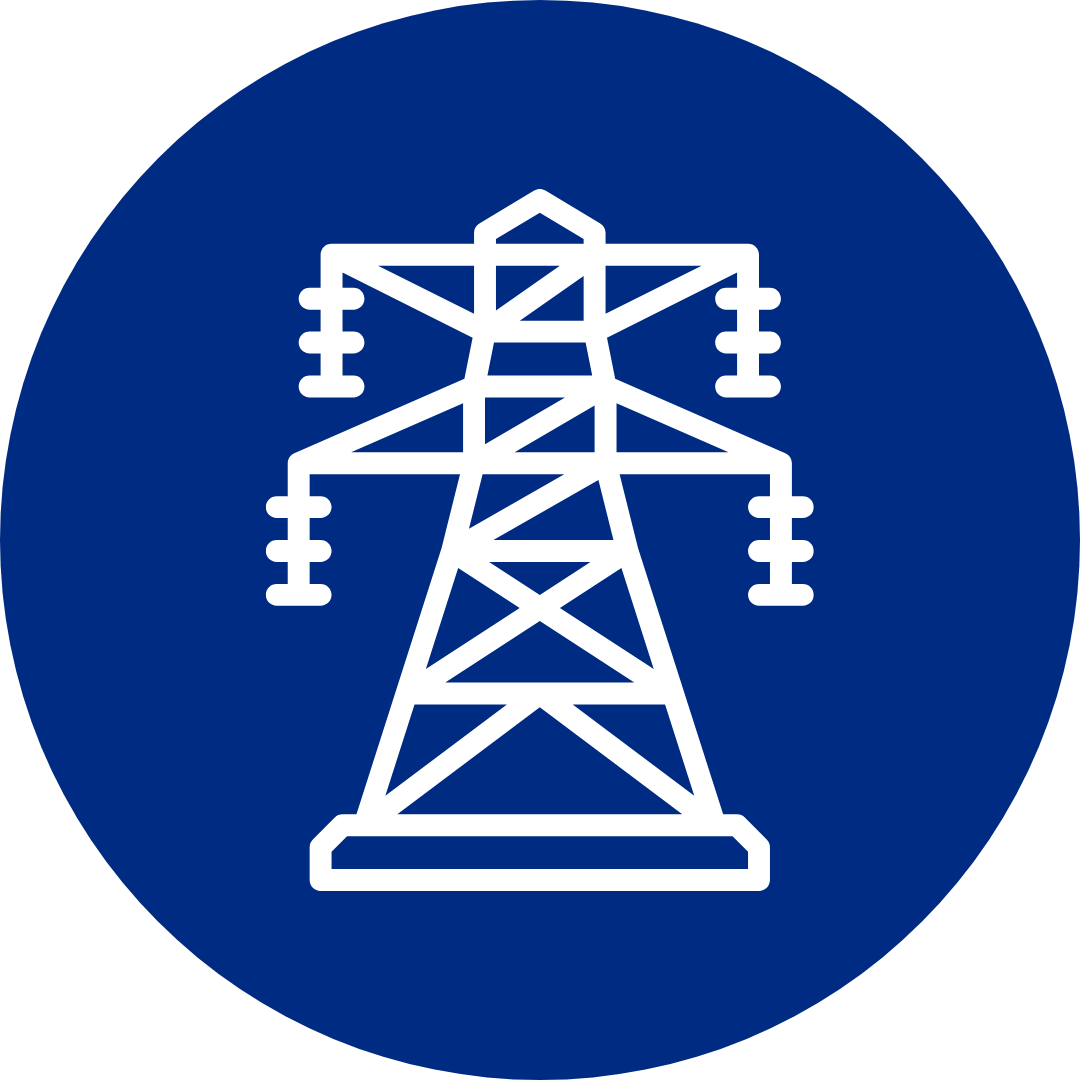Choosing the right cable for safety systems is not just a technical detail—it can determine how well a building withstands a fire. Many assume flame retardant and fire resistant cables are the same, but they serve very different purposes. Flame retardant cables slow the spread of fire, while fire resistant cables keep working during a fire to power vital emergency systems.
This difference matters most in critical situations. Flame retardant cables help reduce smoke and flames but will stop working once exposed to fire. Fire resistant cables, on the other hand, continue to carry power to alarms, lighting, and pumps that people rely on during evacuation. Knowing which type to use ensures both compliance and safety.
By understanding how each cable is designed, tested, and applied, anyone involved in building projects can make better choices. The right decision avoids costly mistakes and ensures that essential systems stay operational when they are needed most.
Key Takeaways
Flame retardant and fire resistant cables serve different safety functions
Each type is tested to specific standards that define its performance
Correct selection depends on the system’s role during a fire
What Is Fire Resistance
Fire resistance refers to the ability of a material or product to continue performing its intended function when exposed to fire. In the case of cables, this means they can maintain circuit integrity and keep working for a defined period during a fire.
Unlike flame retardant cables, which only slow the spread of fire, fire resistant cables are designed to operate under extreme heat. They are tested under conditions that may include direct flames, mechanical impact, and water spray.
Key features of fire resistant cables include:
Circuit integrity maintained during fire
Heat endurance at high temperatures (often above 850°C)
Support for emergency systems such as alarms, lighting, and sprinkler pumps
Different levels of fire resistance exist. Standard fire resistant cables usually provide at least 30 minutes of performance, while enhanced types can continue for up to 120 minutes depending on the test standard.
The choice depends on the application. For example:
Application | Minimum Fire Resistance | Example Use |
Standard buildings | 30 minutes | Fire alarms, emergency lighting |
Large/complex buildings | 120 minutes | Fire-fighting lifts, sprinkler systems |
By ensuring circuits remain active, fire resistant cables help keep evacuation routes lit and safety systems operational. This makes them an essential part of fire protection in many types of buildings.
What Is Flame Retardance
Flame retardance refers to a material’s ability to slow down or limit the spread of fire. It does not mean the material will keep working during a fire, but rather that it resists catching fire or helps prevent flames from moving quickly.
These materials are often treated or designed with additives that make them self-extinguishing. This means if the flame source is removed, the material stops burning on its own.
Key points about flame retardant cables:
They reduce flame spread to other areas.
They limit smoke and toxic gas release.
They are not built to maintain function during a fire.
A simple way to compare:
Feature | Flame Retardant Cables | Fire Resistant Cables |
Main Purpose | Stop fire spreading | Keep working during fire |
Circuit Integrity | Lost in fire | Maintained for set time |
Typical Use | General power, lighting | Alarms, emergency systems |
Flame retardant cables are suitable for non-essential circuits such as sockets, lighting, and appliances. These systems do not need to operate during a fire, but slowing the spread of flames and smoke makes evacuation safer.
By focusing on controlling fire growth, flame retardant technology plays an important role in building safety, even though it does not provide the same level of protection as fire resistant cables.
Key Differences You Should Know
Flame retardant and fire resistant cables may sound similar, but they serve different purposes in fire safety. Knowing how they differ helps ensure the right type is chosen for the right application.
Flame retardant cables are designed to slow down the spread of fire. They use self-extinguishing materials that limit flames, smoke, and toxic gases. However, they do not keep working once exposed to fire and are not intended to maintain circuit integrity.
Fire resistant cables, on the other hand, are built to continue operating during a fire. They maintain circuit integrity for a set period, allowing emergency systems such as alarms, sprinklers, and lighting to function. This makes them essential in life safety and fire-fighting systems.
A simple comparison:
Feature | Flame Retardant Cable | Fire Resistant Cable |
Purpose | Slows fire spread | Maintains circuit integrity during fire |
Function in a fire | Likely to fail | Continues to operate for a defined time |
Typical use | General wiring, sockets, lighting | Emergency lighting, alarms, sprinkler pumps |
Smoke & gas release | Low | Low |
In practice, flame retardant cables suit everyday circuits like office equipment or household devices. Fire resistant cables are required for critical systems where power and signals must be maintained even under fire conditions.
The choice depends on whether the priority is preventing flame spread or ensuring that vital systems remain operational during an emergency.
How Each One Is Tested
Flame retardant and fire resistant cables go through very different testing methods. Each test checks for specific properties, such as how a cable reacts to fire or whether it can keep working during extreme conditions.
Flame Retardant Tests focus on how well a cable slows or stops the spread of flames. These tests do not measure if the cable continues to function.
Common examples include:
IEC/BS EN 60332-1-2: A short flame is applied to a single cable for 60 seconds. The test checks how far the flame travels.
IEC/BS EN 60332-3: Multiple cables are grouped, exposed to a large burner, and observed for flame spread over 20 minutes.
Fire Resistant Tests check if a cable can keep carrying power or signals while under fire. These often involve longer exposure and extra stress conditions.
Key standards include:
BS 6387: Cables are tested under fire alone, fire with water spray, and fire with mechanical shock.
BS EN 50200: A constant flame at 842°C tests whether emergency circuits keep working for 30 to 120 minutes.
IEC 60331: Cables are exposed to high heat and sometimes mechanical shock to confirm circuit integrity.
Cable Type | Main Test Goal | Typical Methods |
Flame Retardant | Limit flame spread | IEC/BS EN 60332 series |
Fire Resistant | Maintain function during fire | BS 6387, BS EN 50200, IEC 60331 |
These tests highlight the contrast: flame retardant cables slow fire growth, while fire resistant cables are designed to keep systems working during emergencies.
Where Fire-Resistant Cables Are Used
Fire-resistant cables, sometimes called fire rated cables, are installed where circuits must keep working during a fire. These cables maintain power or signals long enough for people to evacuate and for safety systems to operate.
They are essential in emergency systems, including:
Fire alarms
Emergency lighting
Smoke extraction fans
Sprinkler pumps
Fire-fighting lifts
In smaller buildings such as offices, schools, or shops, standard fire-resistant cables are often enough. These usually provide at least 30 minutes of circuit integrity under fire conditions.
Larger or more complex sites, like hospitals, shopping centres, or high-rise buildings, require enhanced fire-resistant cables. These can withstand fire, water spray, and mechanical impact for up to 120 minutes, depending on the standard applied.
The table below shows typical applications:
Location/Building Type | Cable Requirement | Example Uses |
Small offices, schools | Standard fire-resistant (30 min) | Fire alarms, exit lighting |
Hospitals, high-rises | Enhanced fire-resistant (120 min) | Sprinkler systems, smoke control |
Industrial facilities | Armoured fire rated cables | Power for safety equipment |
By keeping circuits active in extreme conditions, fire-resistant cables support both life safety systems and fire-fighting operations. This makes them a critical choice in modern building design.
Where Flame-Retardant Cables Are Used
Flame-retardant cables are chosen for areas where the main risk is fire spreading through wiring rather than keeping systems running during a fire. They are designed to limit flame propagation and reduce smoke and toxic gas release.
These cables are commonly installed in general power and lighting circuits. For example, they may supply energy to office sockets, classroom lighting, or household appliances. In these cases, the cables do not need to keep working during a fire, but they do need to slow the spread of flames.
Typical applications include:
Residential buildings – powering everyday devices such as televisions or kitchen equipment
Commercial spaces – office sockets, printers, and lighting systems
Public areas – schools, shops, and other places where fire spread must be controlled
Cable Type | Primary Role | Example Use Case |
Flame-retardant cable | Slows fire spread, limits smoke and gases | Lighting circuits, appliances |
Fire-resistant cable | Maintains function during a fire | Fire alarms, emergency lighting |
By using flame-retardant cables in non-critical circuits, building designers reduce the chance of fire moving quickly through cable routes. This choice supports safety without the added cost of fire-resistant systems where they are not required.
They are especially important in buildings with high occupancy, as slowing fire spread provides more time for evacuation and reduces risks from smoke inhalation.
Standards And Approvals To Check
When selecting flame retardant or fire resistant cables, it is important to confirm that they meet recognised international and national standards. These approvals provide assurance that the cable has been tested for performance in fire conditions.
Key standards include:
IEC 60331: Tests the ability of a cable to maintain circuit integrity during fire.
BS 6387: Assesses resistance to fire, mechanical shock, and water spray.
IEC 60332 / BS EN 60332: Focuses on flame propagation and how well a cable prevents fire spread.
Each of these standards addresses different aspects of fire safety. For example, IEC 60332 checks whether flames can travel along a cable, while IEC 60331 ensures the cable continues to function under direct fire exposure.
The British Standard BS 6387 is often used for critical infrastructure. It tests cables under combined conditions, such as fire with water spray, to simulate real emergencies.
A simple comparison:
Standard | Focus Area | Typical Use Case |
IEC 60331 | Circuit integrity in fire | Emergency circuits, fire alarms |
BS 6387 | Fire, water, and mechanical stress | Hospitals, transport hubs, tunnels |
IEC 60332 / BS EN 60332 | Flame spread prevention | General wiring in public and commercial spaces |
Manufacturers usually mark compliance on cable labelling or datasheets. Checking these approvals helps ensure the cable is suitable for its intended environment and safety requirements.
Labels And Ratings On Cable Jackets
Cable jackets often include printed labels and codes that indicate how the cable performs in fire conditions. These markings help installers, inspectors, and engineers confirm compliance with safety standards.
Common markings include flame-retardant ratings such as VW-1, CL2, or CL3 under UL standards. These show that the cable has passed specific flame tests and is less likely to spread fire.
Fire-resistant cables may carry standards like BS 7629, BS 7846, or IEC 60331. These indicate that the cable can continue operating for a set time during a fire, maintaining circuit integrity for systems such as alarms or emergency lighting.
A simple comparison can be shown below:
Marking / Standard | Meaning | Typical Use |
VW-1 (UL 1581) | Flame test rating | General wiring needing flame resistance |
CL2 / CL3 (UL 13) | Communication cable flame ratings | Audio, video, or control systems |
BS 7629 | Fire-resistant screened cable | Emergency lighting, alarms |
BS 7846 | Armoured fire-resistant cable | Life safety and power systems |
IEC 60331 | Circuit integrity under fire | Critical infrastructure |
Labels may also note Low Smoke Zero Halogen (LSZH) or LSF (Low Smoke and Fume). These terms describe the amount of smoke and toxic gas released when the cable burns.
Reading the jacket markings ensures the correct cable is chosen for its environment, whether the priority is slowing flame spread or keeping circuits active during fire.
Choosing The Right Cable For Your Project
Selecting between flame retardant and fire resistant cables depends on the function of the circuit and the level of fire protection required. Each type has a clear role, and using the wrong one can reduce safety and compliance.
Flame retardant cables are best for standard electrical circuits that are not needed during a fire. They slow the spread of flames and limit smoke and toxic gases, but they do not keep working once exposed to fire. Examples include power supplies for everyday equipment such as office sockets or lighting for non-critical areas.
Fire resistant cables are designed to keep operating during a fire. They maintain circuit integrity for systems that must stay active, such as fire alarms, emergency lighting, sprinkler pumps, and smoke extraction fans. These cables are tested to specific standards to ensure they function for a defined time under fire conditions.
A simple comparison can help guide the choice:
Cable Type | Main Purpose | Stays Operational in Fire? | Typical Use Cases |
Flame Retardant | Slows flame spread, reduces smoke/toxins | No | General sockets, non-critical lighting |
Fire Resistant | Maintains power to safety systems | Yes | Alarms, emergency lighting, fire pumps |
When planning a project, engineers and designers should match the cable type to the building’s safety needs. Small offices may only need standard fire resistant cables, while hospitals or high-rise buildings often require enhanced fire resistant options for longer survival times.
Common Mistakes To Avoid
One frequent mistake is treating flame retardant and fire resistant cables as the same thing. Flame retardant cables only slow the spread of fire, while fire resistant cables keep working during a fire. Mixing them up can leave critical safety systems unprotected.
Another error is using flame retardant cables for emergency systems. These cables are not designed to maintain power in fire conditions. If used for alarms, sprinklers, or evacuation lighting, they will likely fail when most needed.
Many people also ignore testing standards. Cables must meet specific British and European standards, such as BS EN 50200 or BS 8434-2. Without verifying compliance, there is no guarantee the cable will perform as expected in a fire.
It is also common to focus only on cost. Flame retardant cables are usually cheaper, but choosing them for life safety systems can compromise performance. The correct choice depends on function, not just budget.
The table below highlights key mistakes and their risks:
Mistake | Risk |
Using flame retardant instead of fire resistant for alarms | System failure during fire |
Ignoring standards | Cables may not meet safety requirements |
Choosing only by cost | Inadequate fire protection |
Assuming both types are interchangeable | Wrong cable in critical areas |
By avoiding these mistakes, designers and installers can ensure cables serve their intended purpose and support building safety.
Frequently Asked Questions
Cables used in buildings and infrastructure vary in how they react to fire. Some are designed to limit the spread of flames, while others are built to keep working during a fire to support safety systems. Different types also affect smoke and gas emissions, which impacts both safety and installation choices.
What is the difference between fire resistant and flame-retardant cable?
A flame-retardant cable slows down the spread of fire by using materials that self-extinguish.
A fire-resistant cable, on the other hand, is designed to keep electrical circuits working for a set time during a fire. This makes it suitable for emergency systems such as alarms, sprinklers, and evacuation lighting.
Which is better fire resistant or flame-retardant?
Neither type is simply “better”; it depends on the application.
Flame-retardant cables are suitable for general wiring where reducing fire spread is the main goal. Fire-resistant cables are essential for life safety and fire-fighting systems where power and signals must continue during a fire.
What is the difference between FR and FRLS cable?
FR (Flame Retardant) cables resist the spread of fire but can still release smoke and toxic gases.
FRLS (Flame Retardant Low Smoke) cables also limit fire spread but produce less smoke and fewer harmful gases, which improves visibility and reduces health risks during evacuation.
Which is better, FRLS or LSZH?
FRLS cables reduce smoke and toxic gas release compared to standard FR cables.
LSZH (Low Smoke Zero Halogen) cables go further by producing almost no halogen gases, which are corrosive and harmful. LSZH is often preferred in enclosed or public spaces like transport systems, as it improves safety during fire conditions.
Are FRLSH cables fire-resistant?
FRLSH (Flame Retardant Low Smoke Halogen) cables are not fire-resistant.
They are designed to reduce smoke and halogen gas release while slowing flame spread, but they will not maintain circuit integrity during a fire.
When to use fire-resistant cable?
Fire-resistant cables should be used in systems that must keep operating in a fire.
Examples include fire alarms, emergency lighting, sprinkler pumps, and evacuation communication systems. These cables are often required by building codes for hospitals, schools, and high-rise buildings.
Is LSZH flame retardant?
LSZH cables are primarily designed to limit smoke and toxic halogen gas release.
Some LSZH cables also include flame-retardant properties, but not all do. It is important to check the specific product rating to confirm both smoke emission and flame performance.
Alarm Cable
Arctic Grade Cable
Armoured Cable
Audio & Speaker Cable
Auto Cable
Bare Copper
Belden Equivalent Cable
Co-axial Cable
Data Cable
DC Telecom Cable
Defence Standard Cable
Emergency Lighting & Fire Detection Cable
EV Cable
Festoon
![Loose Tube Fibre Cross Section]()
Fixed Wiring PVC & LSOH Cable
Flatform
Flexible Control Cable
Flexible PVC Cable
Flexible Rubber Cable
General Wiring Cable PVC & LSOH
High Temperature Cable
High Voltage Cable
![5308 p1 t2 cat Cross Section]()
LSOH Flexible Cable
Medium Voltage Cable
NYY & N2XH Cable
Protected Wiring Cable
Silicone Cable
Solar Cable
Split Concentric Cable
Spiral Cable
Temporary Power Cable
Tri-Rated Cable
Welding Cable
Alarm Cable
Arctic Grade Cable
Armoured Cable
Audio & Speaker Cable
Auto Cable
Bare Copper
Belden Equivalent Cable
Co-axial Cable
Data Cable
DC Telecom Cable
Defence Standard Cable
Emergency Lighting & Fire Detection Cable
EV Cable
Festoon
![Loose Tube Fibre Cross Section]()
Fixed Wiring PVC & LSOH Cable
Flatform
Flexible Control Cable
Flexible PVC Cable
Flexible Rubber Cable
General Wiring Cable PVC & LSOH
High Temperature Cable
High Voltage Cable
![5308 p1 t2 cat Cross Section]()
LSOH Flexible Cable
Medium Voltage Cable
NYY & N2XH Cable
PAS - BS5308 Instrumentation Cable
Protected Wiring Cable
RS-232 Cable
RS-485 Cable
Silicone Cable
Solar Cable
Split Concentric Cable
Spiral Cable
Telephone Cable
Traffic Signal Cables
Temporary Power Cable
Tri-Rated Cable
Welding Cable
Airports
Automation & Process Control
![Automotive]()
Building & Construction
Communication & Telecommunication
Data Centres
Defence
![DNO 1]()
E-Mobility
Food & Beverage
Marine & Offshore
Mining, Drilling & Tunnelling
OEMs
Oil, Gas & Petrochemical
Rail & Metro
Renewable Energy
Switchgear
Power
Water Treatment













































